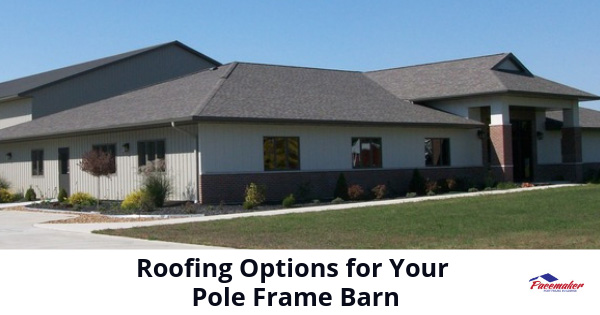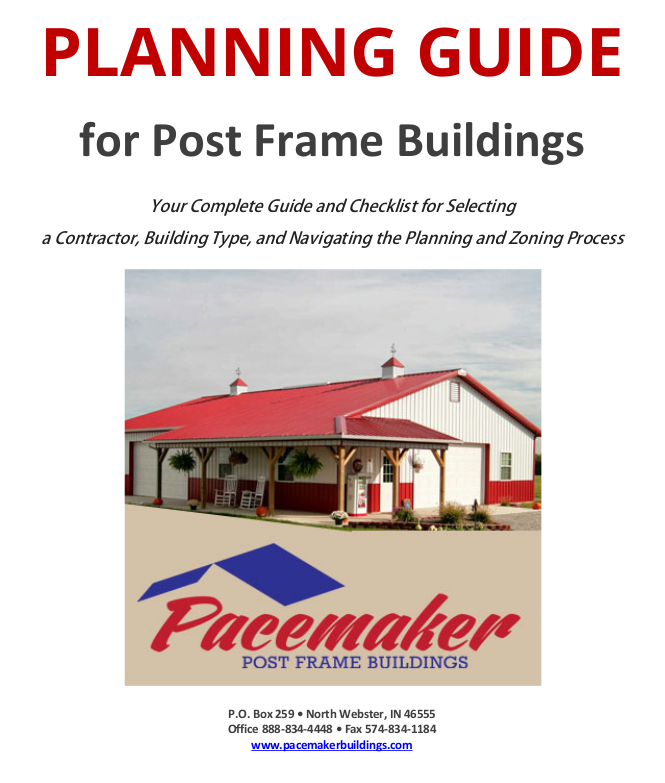 Pole frame barns have been around for decades. During that time, the materials and techniques have improved to transform this type of construction into a suitable option for more than only agricultural structures. Today, pole or post frame methods with so much unobstructed space within are perfect for warehouses, retail structures, municipal buildings, fire stations, churches, schools, and even residences.
Pole frame barns have been around for decades. During that time, the materials and techniques have improved to transform this type of construction into a suitable option for more than only agricultural structures. Today, pole or post frame methods with so much unobstructed space within are perfect for warehouses, retail structures, municipal buildings, fire stations, churches, schools, and even residences.
Selecting the best roofing style and material for your pole frame barn depends on factors that include weather, the durability of materials, and aesthetics. In heavy snow areas, you should select a roofing style and material that will allow the snow to slide easily off the roof to minimize excess load.
Alternatively, you may want to match the barn roofing with the roofing style and material of the home or other surrounding buildings.
Styles of Pole Barn Roofs
Owners generally have four options for pole frame barn roofs. These are:
- Gambrel roof
- Hip roof
- Shed roof
- Gable roof
Gambrel Roofs maximize the space above the trusses and offer additional headroom and storage on the upper floor. Although framing for gambrel roofing is a bit more complicated, the extra space and the traditional barn appearance can be worth the effort.
Hip Roofs are not typical on barns, but many choose them to match their home architecture. Some cubic footage on the top floor is lost due to the slanted angles of all four sides and ends.
Shed Roofing is a single slanted plane roof profile that is simplest to build. This method is often used for smaller barns and outbuildings and minimizes accumulated snow in northern climates
Gable Roofs consist of two equally pitched sides and is probably the easiest to frame. This traditional A-shaped roof is excellent for shedding snow and provides reasonable storage space, less than gambrel roofs, but more than hip and shed roof systems. Ventilation is superior with gable roofing.
Roofing Materials for Pole Frame Barns
Metal Roofing
The appropriateness of roofing materials for pole frame barns depends upon the circumstances. If snow is a significant factor, metal roofing is preferred because of the material’s ability to allow snow and ice to slide off unrestricted to the ground.
In addition, quality metal roofing will last up to three times longer than asphalt shingles under normal conditions. As well as possibly longer in extreme climates.
Metal roofing is more environmentally sustainable. Often made from recycled metal and is itself recyclable, metal is energy efficient and reflects heat away in the summer months. The material is “leak-free” and can withstand high winds and severe conditions better than asphalt tiles.
Although metal roofing is more expensive, the combination of long-lasting and energy efficient will offset the cost difference over time.
Check with local zoning authorities before installation.
Shingles
Shingles, asphalt or other types, are less expensive to install than metal. Some pole frame barn owners choose to match their home or other neighborhood buildings by staying with shingles.
Asphalt shingles come in a wide range of styles and colors. Many consider shingles to be more attractive and less “industrial” than metal roofing. When the time comes for replacement, you always have the choice to change to other more fitting colors.
Check with Pacemaker Post Frame Buildings
The longtime experts in post frame construction in Northern Indiana and the surrounding region, Pacemaker Post Frame Buildings understands the needs of pole frame barn owners. Whether the structure is for storing equipment, housing animals, or keeping grains and hay dry, Pacemaker can help with the design and construction. The company will supply all the parts and will advise the appropriate roof options for your barn.
Visit the Pacemaker website to learn more about post or pole frame buildings, or phone 888.834.4448.
